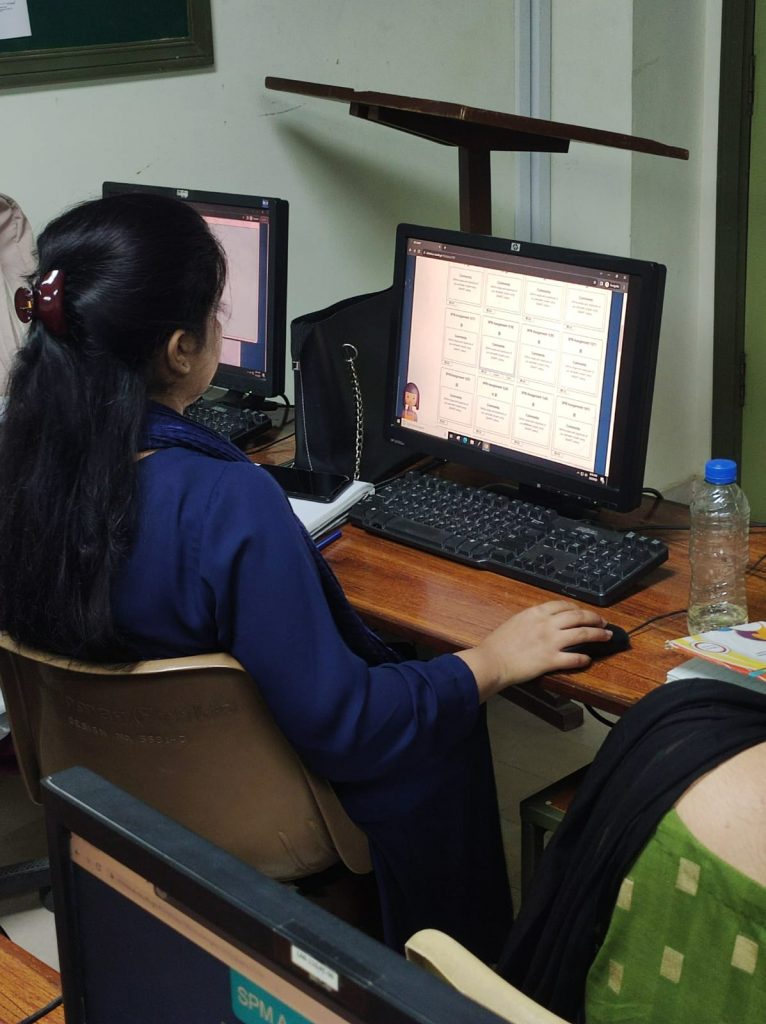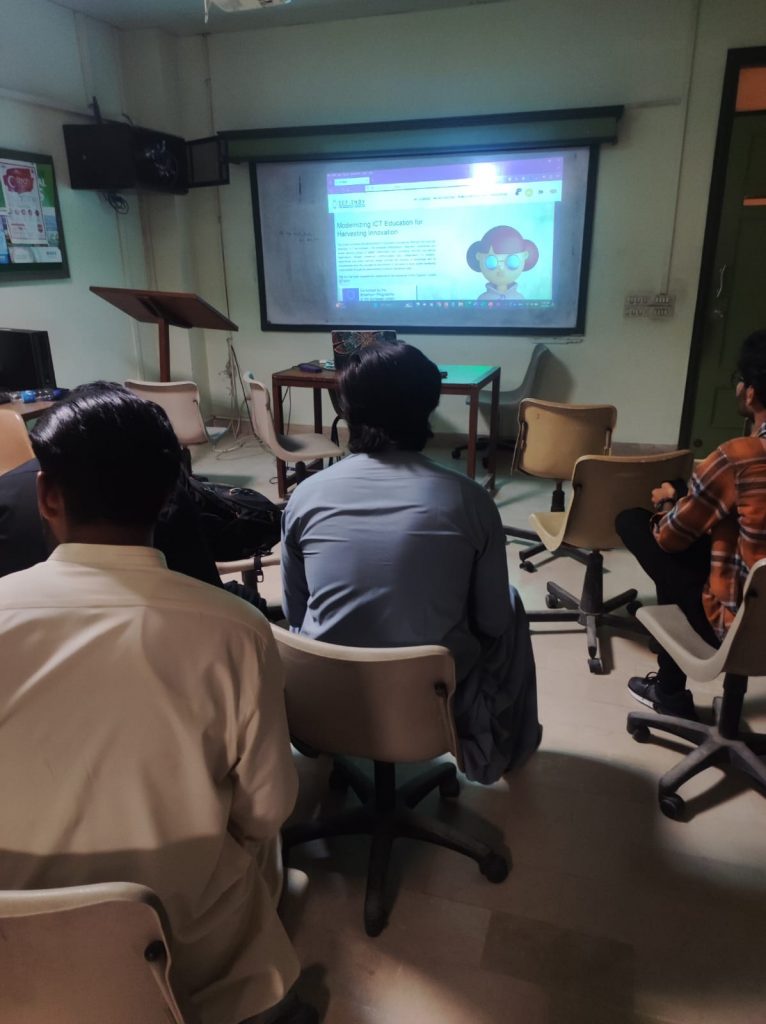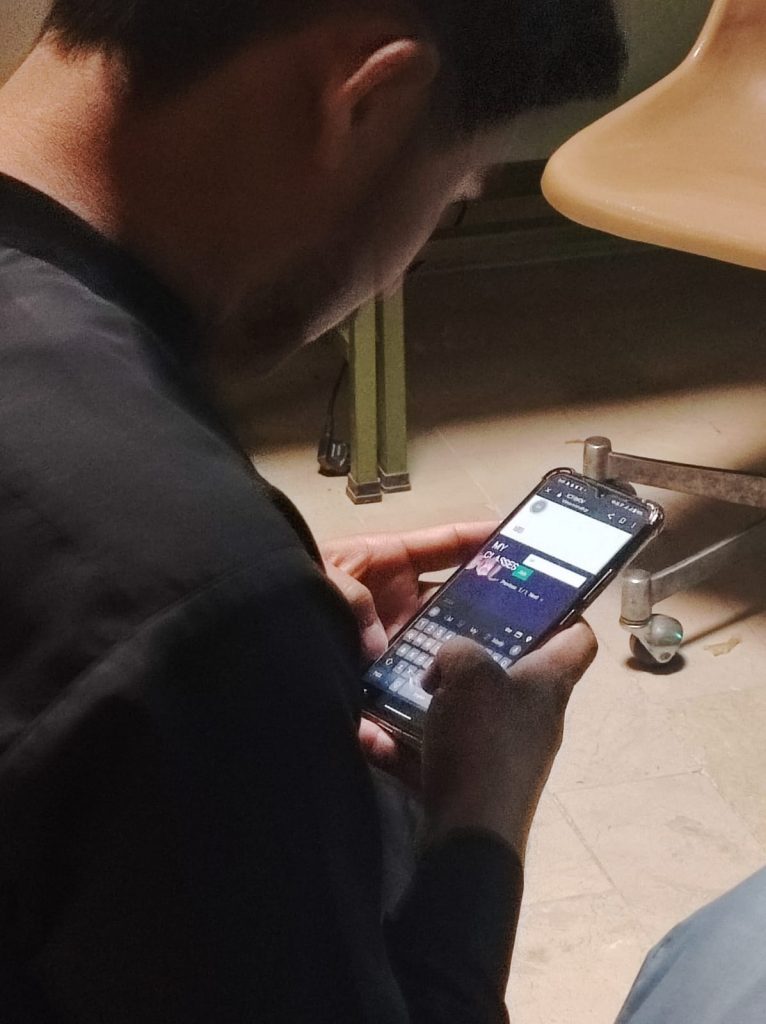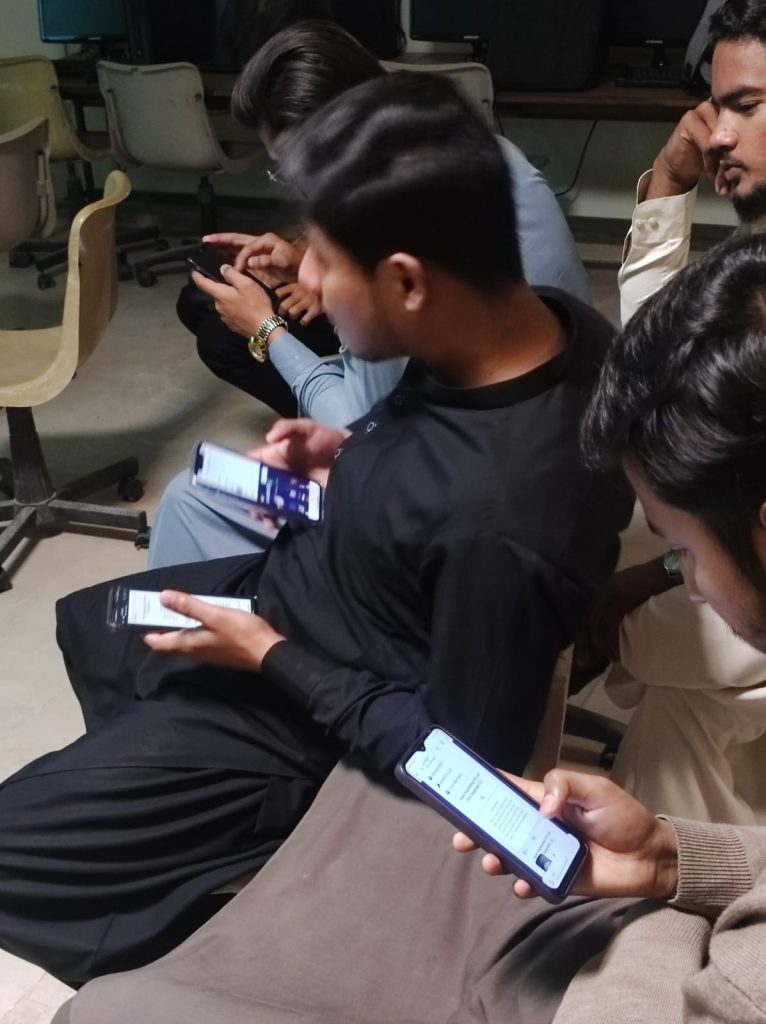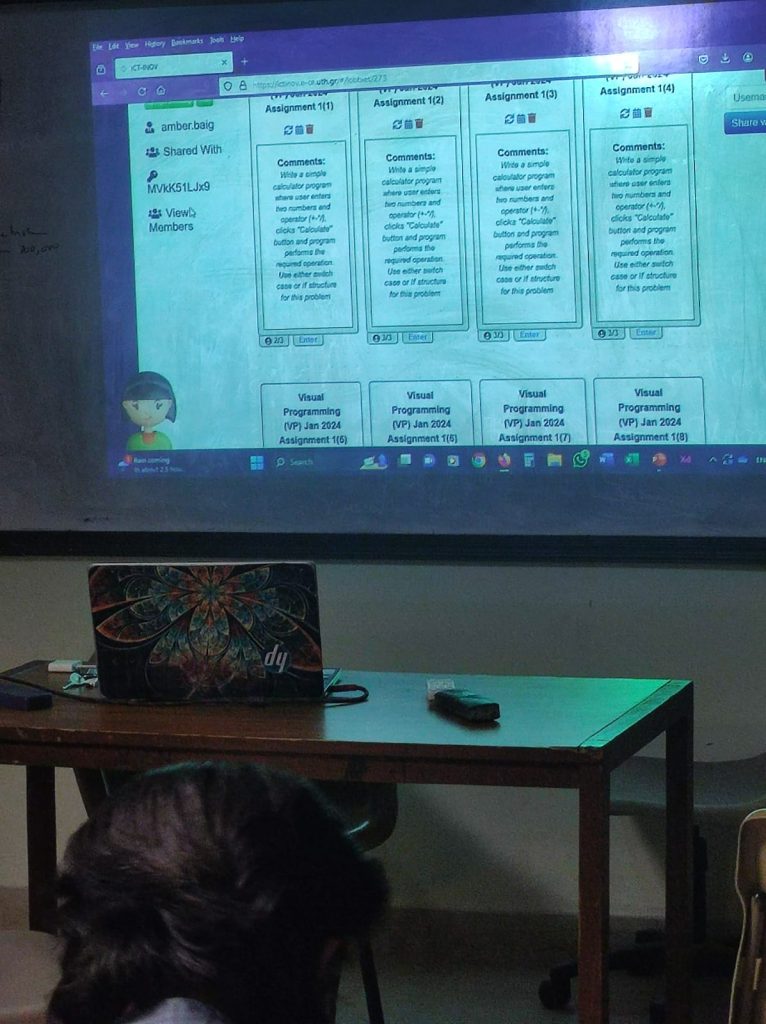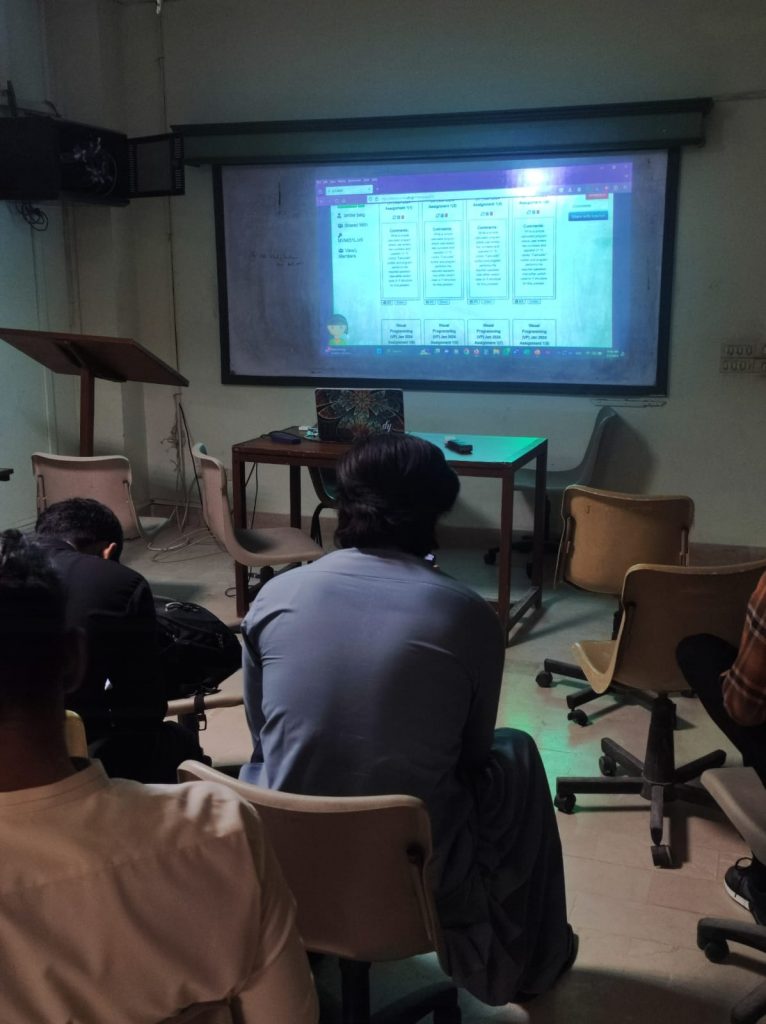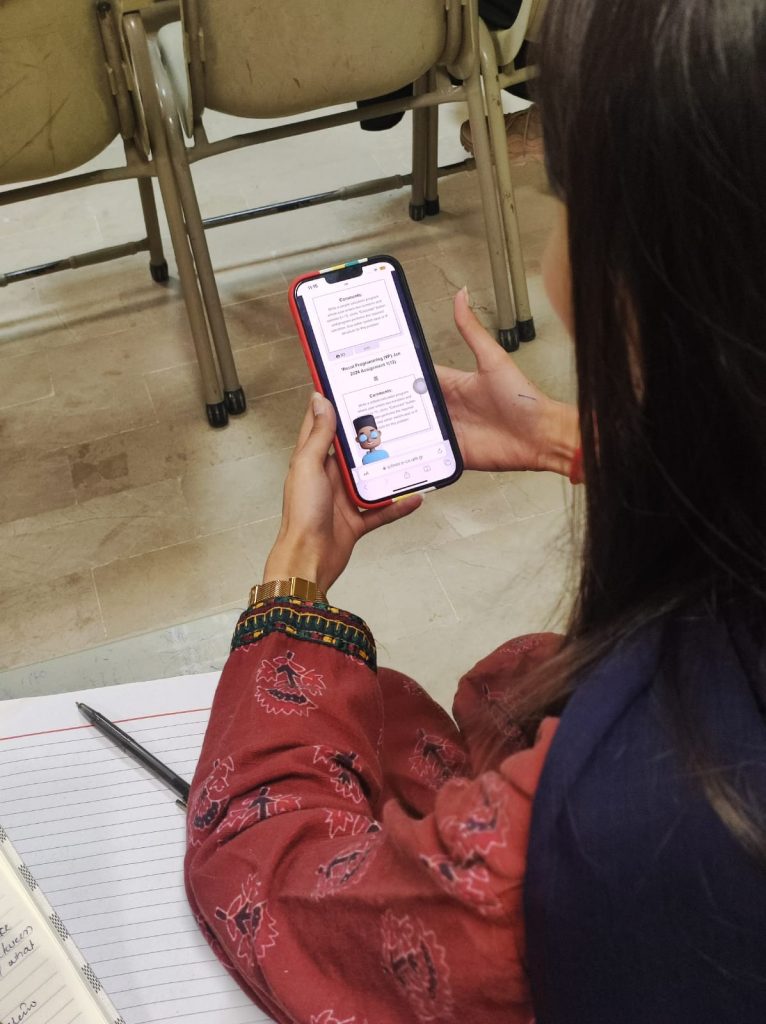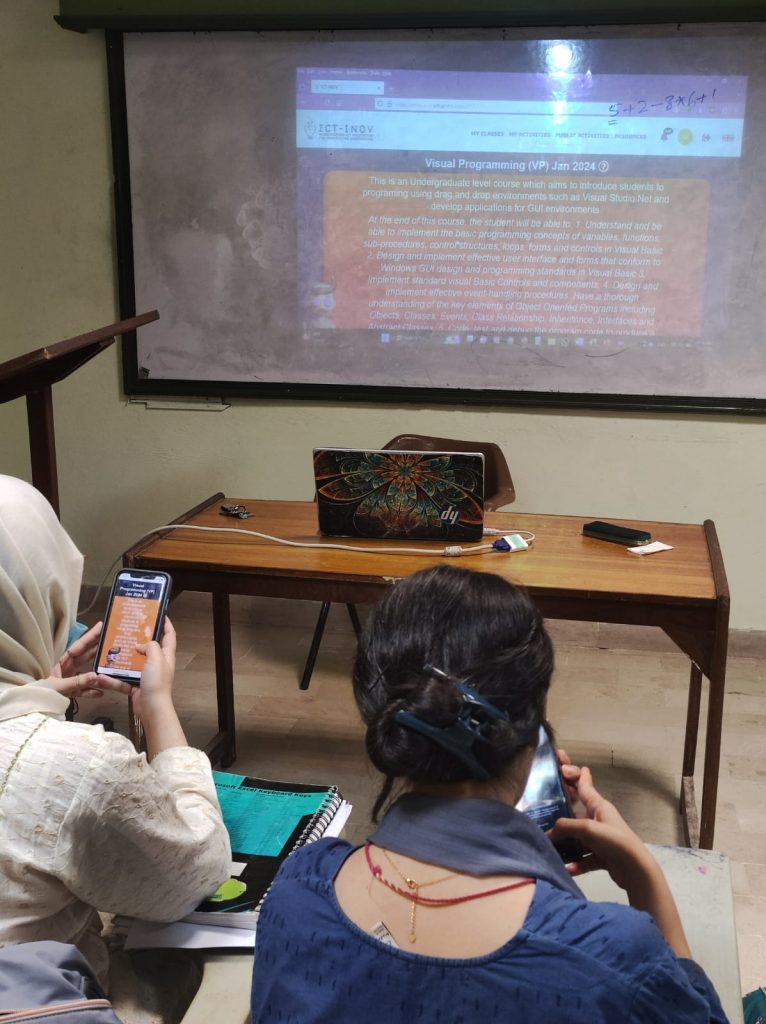
Description of the course
The course introduces computer programming using Visual Basic®, which is an object-oriented net programming language. Emphasis is on event-driven programming methods, including creating and manipulating objects, classes, and using object-oriented tools such as the class debugger. Upon completion of the course students are able to design, code, test, and debug at a beginning level.
Description of the participants
This is an optional course for Computer Science, Software Engineering and Information Technology students. The course is offered in the 3rd year of studies in the Department of Computer Science, ISRA University, Hyderabad Pakistan. In the spring 2023 semester the course was attended by 36 students.
Description of gamified design thinking activities
Gamified design thinking activities were introduced in the form of semester project that combined the principles of design thinking with the engaging elements of gamification to create an interactive and immersive learning experience for students in the field of visual programming. The purpose of this semester project was to enhance student understanding of design concepts, problem-solving skills, and creativity while making the learning process enjoyable and rewarding.
Throughout the semester, students were introduced to various design thinking methodologies and principles, such as empathy, ideation, prototyping, and testing. The project was divided into several stages, each representing a specific phase of the design thinking process.
Step 1. Problem discovery.
Students were challenged to research the world of visual programming by exploring different programming constructs and tools. They gained a solid understanding of the fundamental concepts and techniques required for creating interactive visual applications.
Step 2. Problem re-definition.
Students focused on understanding the needs and preferences of potential users or clients. They were engaged in activities such as conducting user interviews, creating personas, and analyzing user feedback. These activities helped students develop empathy for their target audience and gain insights into their motivations, pain points, and desired outcomes.
Step 3. Ideation.
Students participated in brainstorming sessions and collaborative activities to generate innovative ideas for their visual programming projects. They learned techniques like mind mapping, sketching, and rapid prototyping to translate their ideas into tangible concepts and designs.
Step 4. Prototyping.
Students brought their ideas to life by creating interactive prototypes of their visual programming projects. They utilized appropriate Visual Basic® tools to develop functional prototypes that showcase the core features and functionalities of their designs.
